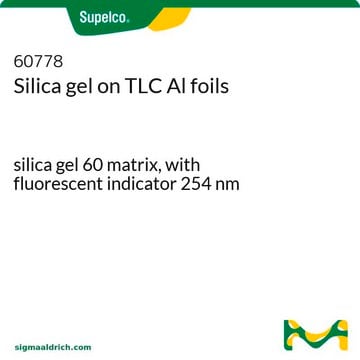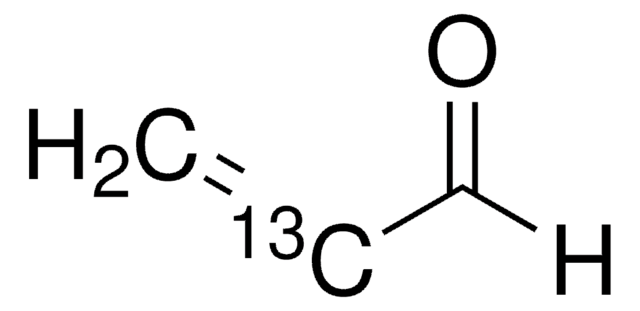64409
Propionaldehyde
analytical standard
Synonyme(s) :
Propanal
About This Item
Produits recommandés
Qualité
analytical standard
Niveau de qualité
Densité de vapeur
2 (vs air)
Pression de vapeur
18.77 psi ( 55 °C)
4.89 psi ( 20 °C)
Pureté
≥98.0% (GC)
Température d'inflammation spontanée
404 °F
Durée de conservation
limited shelf life, expiry date on the label
Limite d'explosivité
17 %, 26 °F
2.6 %, 31 °F
Technique(s)
HPLC: suitable
gas chromatography (GC): suitable
Indice de réfraction
n20/D 1.360-1.365
n20/D 1.362 (lit.)
Point d'ébullition
46-50 °C (lit.)
Pf
−81 °C (lit.)
Densité
0.805 g/mL at 25 °C (lit.)
Application(s)
cleaning products
cosmetics
flavors and fragrances
food and beverages
personal care
Format
neat
Chaîne SMILES
[H]C(=O)CC
InChI
1S/C3H6O/c1-2-3-4/h3H,2H2,1H3
Clé InChI
NBBJYMSMWIIQGU-UHFFFAOYSA-N
Vous recherchez des produits similaires ? Visite Guide de comparaison des produits
Catégories apparentées
Description générale
Find all available reference materials for compounds listed in 10/2011 here
Application
- Food products and cosmetics using gas-chromatography with photo ionization detection (GC-PID).
- Infant formulas using gas chromatography with flame ionization detection (GC-FID).
- Household products using gas chromatography coupled to mass spectrometry (GC-MS).
Mention d'avertissement
Danger
Mentions de danger
Classification des risques
Acute Tox. 4 Inhalation - Acute Tox. 4 Oral - Eye Dam. 1 - Flam. Liq. 2 - Skin Irrit. 2 - STOT SE 3
Organes cibles
Respiratory system
Code de la classe de stockage
3 - Flammable liquids
Classe de danger pour l'eau (WGK)
WGK 1
Point d'éclair (°F)
-22.0 °F - closed cup
Point d'éclair (°C)
-30 °C - closed cup
Choose from one of the most recent versions:
Déjà en possession de ce produit ?
Retrouvez la documentation relative aux produits que vous avez récemment achetés dans la Bibliothèque de documents.
Les clients ont également consulté
Protocoles
-Tolualdehyde; Valeraldehyde; Isovaleraldehyde
Notre équipe de scientifiques dispose d'une expérience dans tous les secteurs de la recherche, notamment en sciences de la vie, science des matériaux, synthèse chimique, chromatographie, analyse et dans de nombreux autres domaines..
Contacter notre Service technique












